calsfoundation@cals.org
Fish
Arkansas fishes are a combination of abundant and rare species—primitive and ancestral, commercial and sport, game and non-game, native and introduced, and transplanted and exotic. There are approximately 233 fish species in Arkansas. Arkansas has a relatively rich fish fauna compared to neighboring states (which range between 148 and 319 fish species). Some species, such as the western mosquitofish (Gambusia affinis), are common statewide, whereas other species, such as the yellowcheek darter (Etheostoma moorei), have more restricted distributions. Distinct differences in topography and geology between northwestern (upland) and southeastern (lowland) Arkansas have led to distinctly different groups of fish species developing in each of these regions. For example, because of an abundance of clear, gravel-bottom, flowing streams in northwestern Arkansas, sight-feeding predators like smallmouth bass (Micropterus dolomieu), many minnows (Cyprinidae family), and darters (Percidae family) tend to predominate. Conversely, species that thrive in deep, turbid, sluggish rivers—such as catfishes (Ictaluridae family), freshwater drum (Aplodinotus grunniens), and suckers (Catostomidae family)—tend to be abundant in southeastern Arkansas.
There are four Arkansas fishes listed by the U.S. Fish and Wildlife Service as threatened or endangered: the pallid sturgeon (Scaphirhynchus albus), the Ozark cavefish (Amblyopsis rosae), the Arkansas River shiner (Notropis girardi), and the leopard darter (Percina pantherina). These species have experienced precipitous declines in abundance or distribution due to man-induced influences, such as habitat alterations and reductions, pollution, and exploitation. The Arkansas River shiner is considered extirpated from the state.
Arkansas fishes are a mixture of primitive fishes with ancestral characteristics and modern fishes with more derived characteristics. Paddlefish (Polyodon spathula) and the sturgeons (Acipenseridae family) are relict species with striking characteristics, such as asymmetrical tails and cartilaginous skeletons, both features of sharks. Minnows and sunfishes (Centrarchidae family) are more typical modern bony fishes, with calcified skeletons and symmetrical tails.
Commercial fishing played an important role during settlement and early development of Arkansas. Commercial catches of freshwater fishes have probably declined in recent history, but catch statistics from the late 1800s and early 1900s do not exist. It is no longer legal to buy or sell game fish in Arkansas unless the fish were raised by a licensed fish farmer or unless they are bream (Lepomis species) four inches or less in length. One noteworthy commercial fishery is the harvest of paddlefish for their eggs. The eggs or roe of paddlefish are processed into caviar and can sell retail for as much as $200 per pound. The three most important game or sport fisheries in Arkansas are catfishes, crappies (Pomoxis species), and black basses (Micropterus species). Each year, angling in Arkansas accounts for more than 13 million days of recreation and expenditures of almost $500 million. In addition to game fishes, Arkansas also has a wide range of non-game species that include sixty-two minnow species and thirty-eight darter species. Overall, about 205 fish species are native to Arkansas.
Approximately twenty-eight fish species, one subspecies, and three hybrids have been introduced (intentionally or unintentionally released into waters where they are not native) to Arkansas. The exact number of nonindigenous fishes in Arkansas is a matter of debate. The U.S. Geological Survey’s Nonindigenous Aquatic Database lists fifty-one records of nonindigenous fishes in Arkansas. Some native species have been introduced within the state outside of their natural geographic distribution. Fishes are introduced to create recreational fishing opportunities, as biological control agents, or for other reasons. Northern pike (Esox lucius) and muskellunge (Esox masquinongy) were introduced, to diversify recreational fishing opportunities, into deeper reservoirs where they were able to survive warm summer temperatures in the cooler, deeper waters. Construction of dams on the White River in the mid-1900s eliminated habitat for many native fish species. To increase recreational fishing opportunities, non-native rainbow trout (Oncorhynchus mykiss), cutthroat trout (Oncorhynchus clarkii), and brook trout (Salvelinus fontinalis) were introduced into the tailwaters below these dams, which were cool and unable to support the native species. These three trout are considered transplanted, because their natural geographic distributions included some part of the United States. The brown trout (Salmo trutta) was also introduced into these tailwaters. The brown trout is an exotic species (not indigenous anywhere in the United States) originally imported from Europe. Today, these tailwaters are the basis for a multi-million-dollar trout fishery. The world record forty-pound four-ounce brown trout was caught on the Little Red River below Greers Ferry Lake in 1992. The exotic grass carp (Ctenopharyngodon idella) was introduced into Arkansas in 1963 for use as a biological control agent for aquatic vegetation. Other Asian carps were introduced into Arkansas, as plankton control agents, for use in aquatic systems. All of these carp species have subsequently been collected from public waters. Several exotic African cichlids (Oreochromis species) have been introduced into Arkansas reservoirs as forage for native predatory fishes. The Florida subspecies of largemouth bass was introduced to Arkansas because of its tendency to grow larger than the northern species. The Florida subspecies does not grow well in colder, higher latitudes, and its distribution in Arkansas is limited to southern portions of the state.
Advances in reproductive technologies allow the production of hybrids, which are crosses between two fish species from the same genus. Hybrid fishes tend to exhibit hybrid vigor, whereby the hybrids display the best characteristics of both parental species. Hybrids may grow faster, be more tolerant of poor water quality, or fight better when caught by anglers. Three hybrids have been stocked in Arkansas to improve and diversify angling opportunities. The tiger muskellunge is a cross between northern pike and muskellunge. Sunshine bass is a cross between white bass (Morone chrysops) and striped bass (Morone saxatilis), and saugeye is a cross between sauger (Sander canadensis) and walleye (Sander vitreus). Hybrids generally have reduced reproductive capacity, and none of these hybrids are self-sustaining populations in natural waters of the state.
The fish fauna of Arkansas is dynamic. There have been at least eighteen new species identified in Arkansas since authors H. W. Robison and T. M. Buchanan completed their work on Fishes of Arkansas in 1988. There is a growing concern regarding the introduction of non-native fishes. The benefits of introduced fish species should be compared to the risk of negative effects of introduced species on native fishes and their habitats. Management of the diverse fish fauna and conservation of Arkansas native and introduced fishes will require creative solutions to present and future conflicts over water resources, land use practices, and industrial and agricultural development.
For additional information:
Nonindigenous Aquatic Species Database. U.S. Geological Survey. http://nas.er.usgs.gov (accessed September 3, 2020).
Robison, Henry W., and Thomas M. Buchanan. Fishes of Arkansas. 2nd ed. Fayetteville: University of Arkansas Press, 2020.
Steve Lochmann
Aquaculture/Fisheries Center
University of Arkansas at Pine Bluff
Table 1. Fishes Introduced in Arkansas
(Note: The U.S. Geological Survey Nonindigeneous Aquatic Species Database lists fifty-one records of nonindigeneous fishes in Arkansas. The exact number of nonindigeneous species is debatable and is likely to change occasionally as new fish are introduced.)
| Exotics | |
| Carassius auratus | goldfish |
| Ctenopharyngodon idella | grass carp |
| Cyrpinus carpio | common carp |
| Hypophthalmichthys molitrix | silver carp |
| Hypophthalmichthys nobilis | bighead carp |
| Mylopharyngodon piceus | black carp |
| Scardinius erythrophthalmus | rudd |
| Piaractus brachypomus | pirapatinga |
| Salmo trutta | brown trout |
| Astronotus ocellatus | oscar |
| Oreochromis aureus | blue tilapia |
| Oreochromis mossambicus | Mozambique tilapia |
| Oreochromis niloticus | Nile tilapia |
| Tilapia zillii | redbelly tilapia |
| Non-Native Transplants | |
| Ameiurus catus | white catfish |
| Esox lucius | northern pike |
| Esox masquinongy | muskellunge |
| E. lucius x E. masquinongy | tiger muskellunge |
| Osmerus mordax | rainbow smelt |
| Oncorhynchus clarkii | cutthroat trout |
| Oncorhynchus mykiss | rainbow trout |
| Salvelinus fontinalis | brook trout |
| Salvelinus namaycush | lake trout |
| Morone saxatilis | striped bass |
| Morone americana | white perch |
| Morone chrysops x M. saxatilis | sunshine bass |
| Ambloplites rupestris | rock bass |
| Lepomis auritus | redbreast sunfish |
| Micropterus coosae | redeye bass |
| Micropterus salmoides floridanus | florida subspecies of largemouth bass |
| Perca flavescens | yellow perch |
| Sander candensis x S. vitreus | saugeye |
| Native Transplants | |
| Dorosoma petenense | threadfin shad |
| Notropis ozarcanus | Ozark shiner |
| Notropis potteri | chub shiner |
| Pimephales promelas | fathead minnow |
| Ameiurus nebulosus | brown bullhead |
| Ictalurus furcatus | blue catfish |
| Noturus exilis | slender madtom |
| Esox niger | chain pickerel |
| Menidia beryllina | inland silverside |
| Ambloplites constellatus | Ozark bass |
| Micropterus dolomieu | smallmouth bass |
| Sander canadensis | sauger |
| Sander vitreum | walleye |
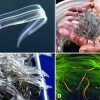 American Eel
American Eel Aquaculture
Aquaculture Arkansas Darter
Arkansas Darter Arkansas Game and Fish Commission State Fish Hatcheries
Arkansas Game and Fish Commission State Fish Hatcheries Atherinopsids
Atherinopsids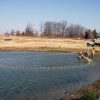 Baitfish Industry
Baitfish Industry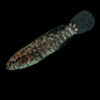 Banded Pygmy Sunfish
Banded Pygmy Sunfish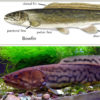 Bowfin
Bowfin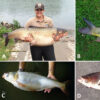 Carps
Carps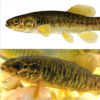 Central Mudminnows
Central Mudminnows Endangered, Threatened, and Rare Species
Endangered, Threatened, and Rare Species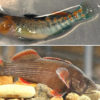 Endemic Darters
Endemic Darters Environment
Environment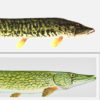 Esocids
Esocids Fly-fishing
Fly-fishing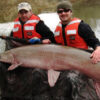 Gars
Gars Geography and Geology
Geography and Geology Goldeyes and Mooneyes
Goldeyes and Mooneyes Herrings
Herrings Lampreys
Lampreys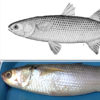 Mullets
Mullets National Fish Hatcheries
National Fish Hatcheries Northern Snakehead
Northern Snakehead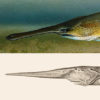 Paddlefish
Paddlefish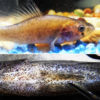 Pirate Perch
Pirate Perch Recreation and Sports
Recreation and Sports Science and Technology
Science and Technology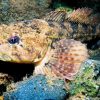 Sculpins
Sculpins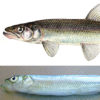 Smelts
Smelts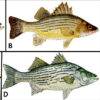 Temperate Basses
Temperate Basses Topminnows
Topminnows Western Mosquitofish
Western Mosquitofish Arkansas Darter
Arkansas Darter  Arkansas River Shiner
Arkansas River Shiner  Leopard Darter
Leopard Darter  Minnows
Minnows 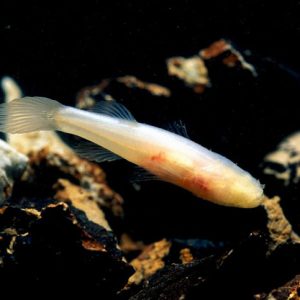 Ozark Cavefish
Ozark Cavefish 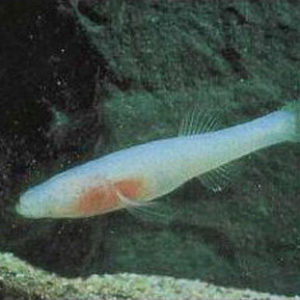 Ozark Cavefish
Ozark Cavefish  Pallid Sturgeon
Pallid Sturgeon 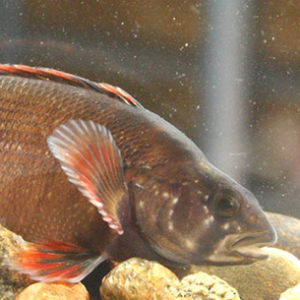 Yellowcheek Darter
Yellowcheek Darter 




Comments
No comments on this entry yet.